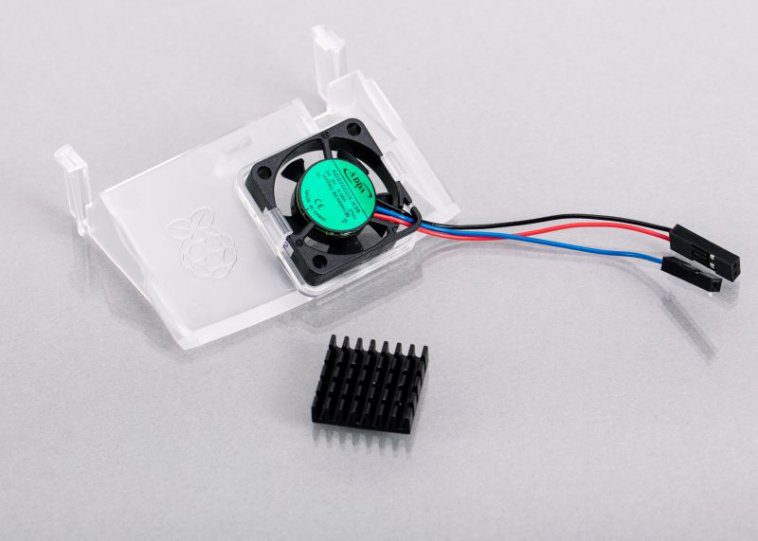When I first investigated inserting a fan into the standard Raspberry Pi case there were two main requirements. The first was to keep the CPU cool in all usage scenarios. The second was to reduce or eliminate any changes to the current case and therefore avoid costly tool changes.
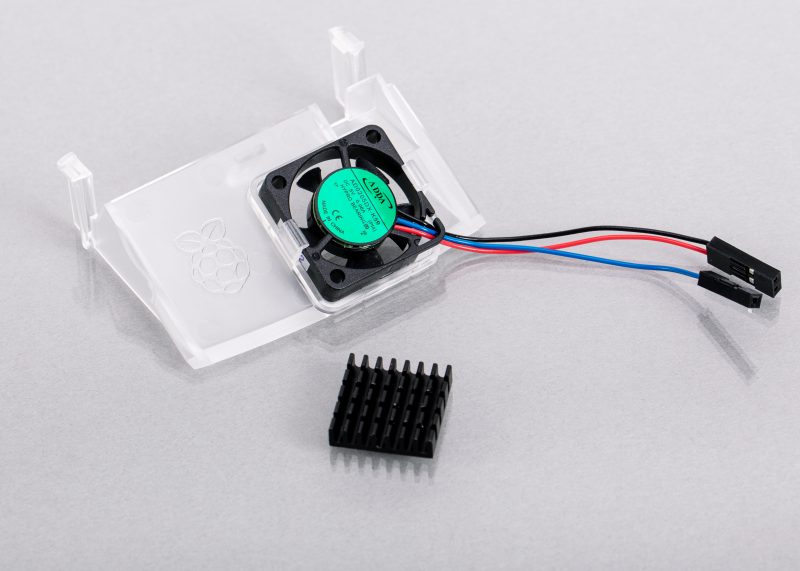
As I had no experience developing a fan, I did what all good engineers do and had a go anyway. We had already considered opening the space above the Ethernet connector to create a flow of air into the case. So, I developed my first prototype from a used Indian takeaway container (I cleaned it first), but the below card version was easier to recreate
The first prototype

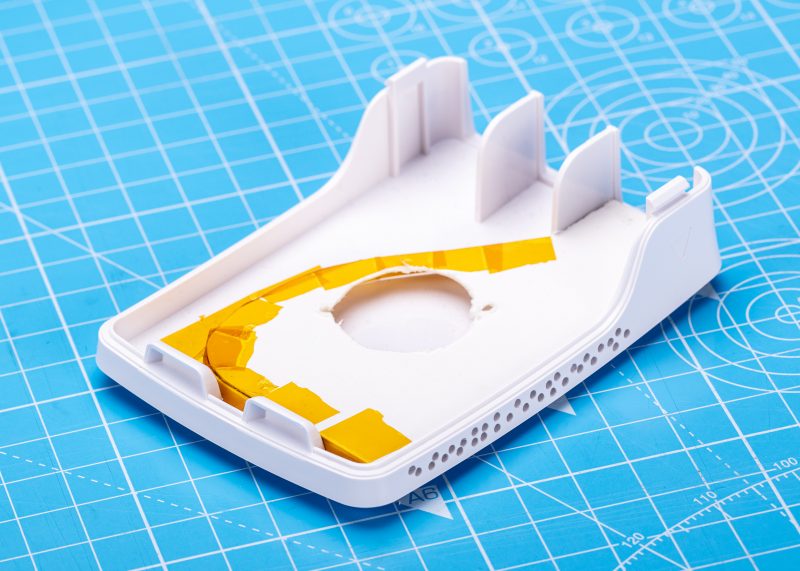
The above duct is what remains from my first effort, the concept is relatively simple, draw air in over the Ethernet port, and then drive the air down onto the CPU. But it wasn’t good enough, running CPU-burn on all four cores required a fan which sounded like it was about to take off. So I spoke to a professional who did some computational fluid dynamics (CFD) analysis for us.
It’s a kind of magic
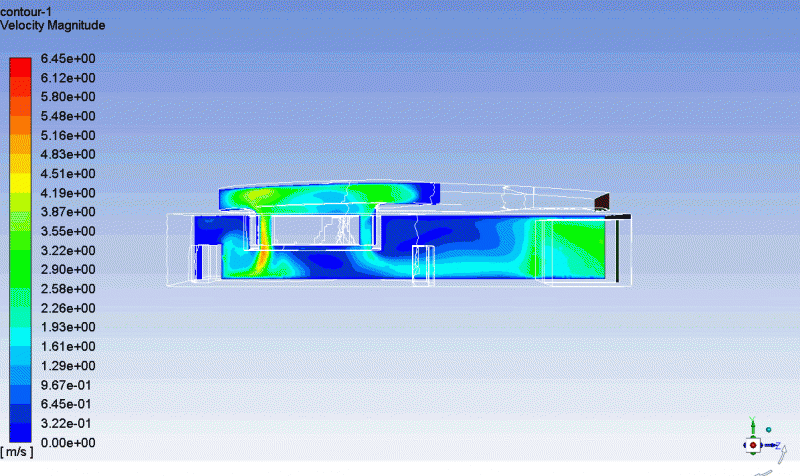
CFD analysis takes a 3D description of the volume and calculates a simulation of fluid flow (the air) through the volume. The result shows where the air moves fastest (the green and red areas)
What this showed us is the position of the fan is important since the fastest moving bit of air is actually quite far from the centre of the processor, also:
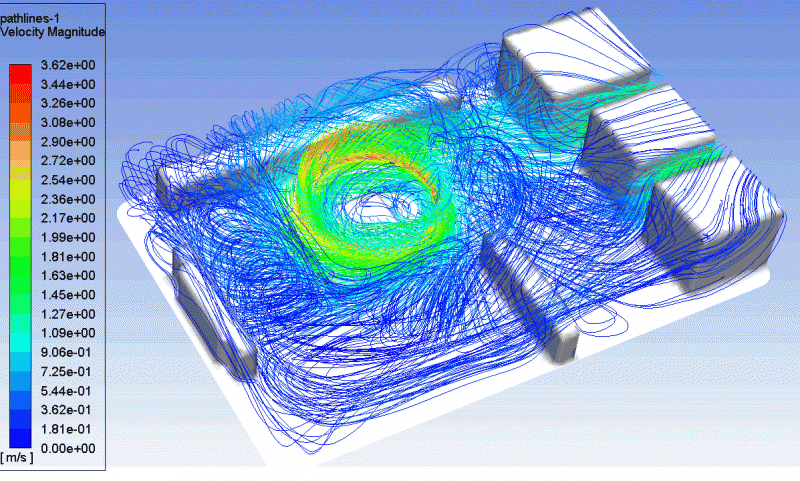
The picture above shows how most of the moving air (green and red) is mainly spinning around inside the fan. This happens because there is a pressure difference between the input and output sides of the fan (the sucky end and the blowy end). Fans just don’t work well that way, they are most efficient when unrestricted. I needed to go back to the drawing board. My next experiment was to add holes into the case to understand how much the airflow could be changed.
Improving airflow
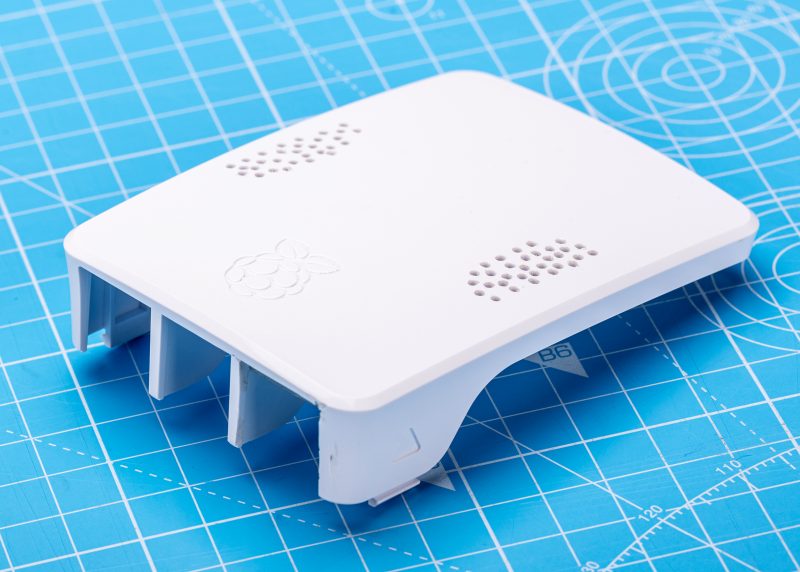

After running the tests with additional holes in both the lid and the base I concluded the issue wasn’t really getting air unrestricted in and out of the case (although the holes did make a small difference) but the effect the air duct was having on restricting the flow into the fan itself. Back to the drawing board…
During a long run in the fens, I thought about the airflow over the Ethernet connector and through the narrow duct, wondering how we can open this up to reduce the constriction. I realised it might be possible to use the whole ‘connector end’ of the case as the inlet port.
The breakthrough
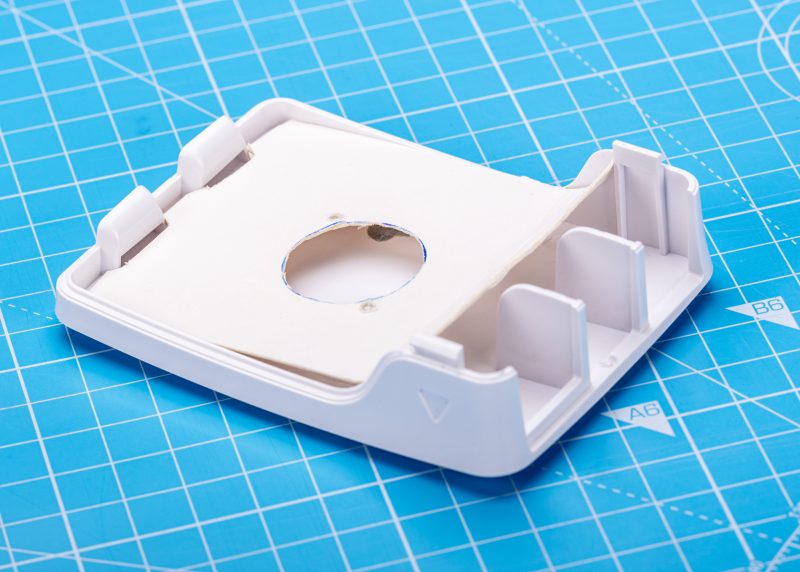
Suddenly, I had made a big difference… By drawing air from around the USB and Ethernet connectors the lid has been left un-modified but still achieves the cooling effect I was looking for. Next was to reduce the direction changes in the air flow and try to make the duct simpler.
The bulkhead
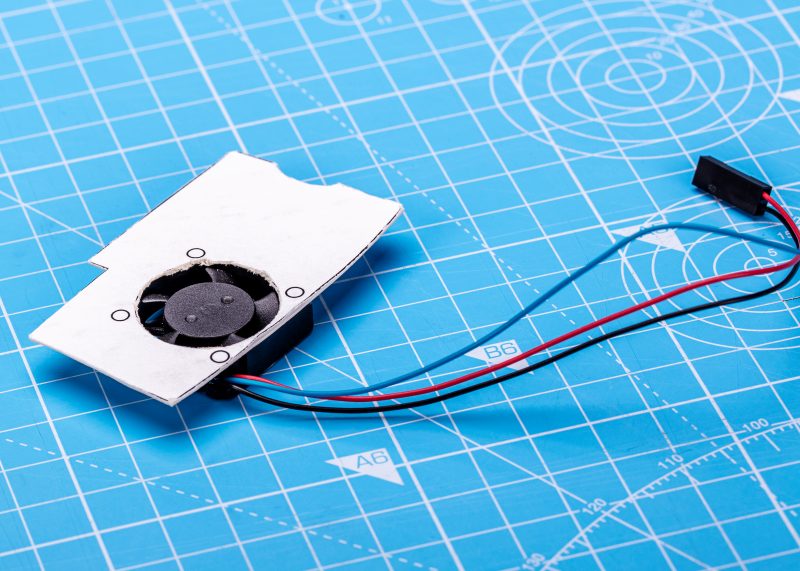
The cardboard bulkhead does exactly what you need to do and nothing more. It separates the two halves of the case, and directs the air down directly at the processor. Using this design and the heatsink, I was able to achieve a cooling capable of easily running the cpuburn application but with an even smaller (quieter) fan.
The next job is to develop a plastic clip to attach the fan into the lid. That’s where our friends at Kinneir Dufort came in. They designed the injection moulded polycarbonate that makes an accurate interface with the Raspberry Pi’s PCB. The ‘bulkhead’ clips neatly into the slots in the lid, almost like it was planned!
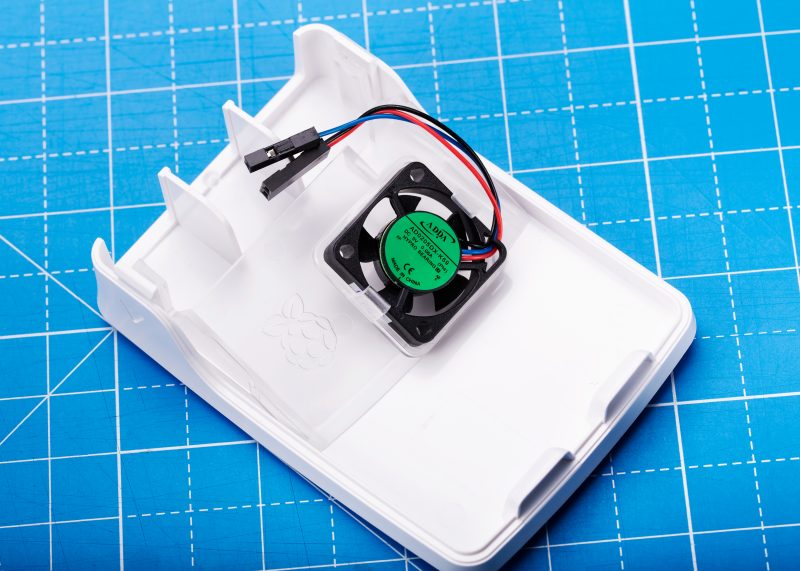
The Raspberry Pi Case Fan has been developed with an advanced user in mind. It allows them to use the Raspberry Pi at its limits whilst retaining the unique finished exterior of the Raspberry Pi Case.
For those who love a good graph, here are the temperature results during a quad-core compile of the Linux kernel, as demonstrated in Eben’s launch post on Monday.
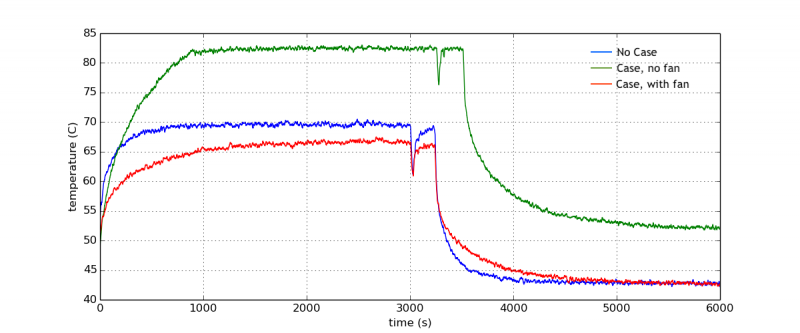
Buy your Raspberry Pi 4 Case Fan today
Raspberry Pi Case Fan is available from our Raspberry Pi Approved Resellers. Simply head over to the Case Fan page and select your country from the drop-down menu.
Website: LINK

